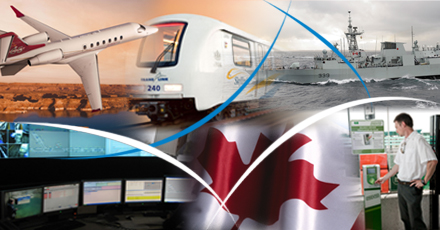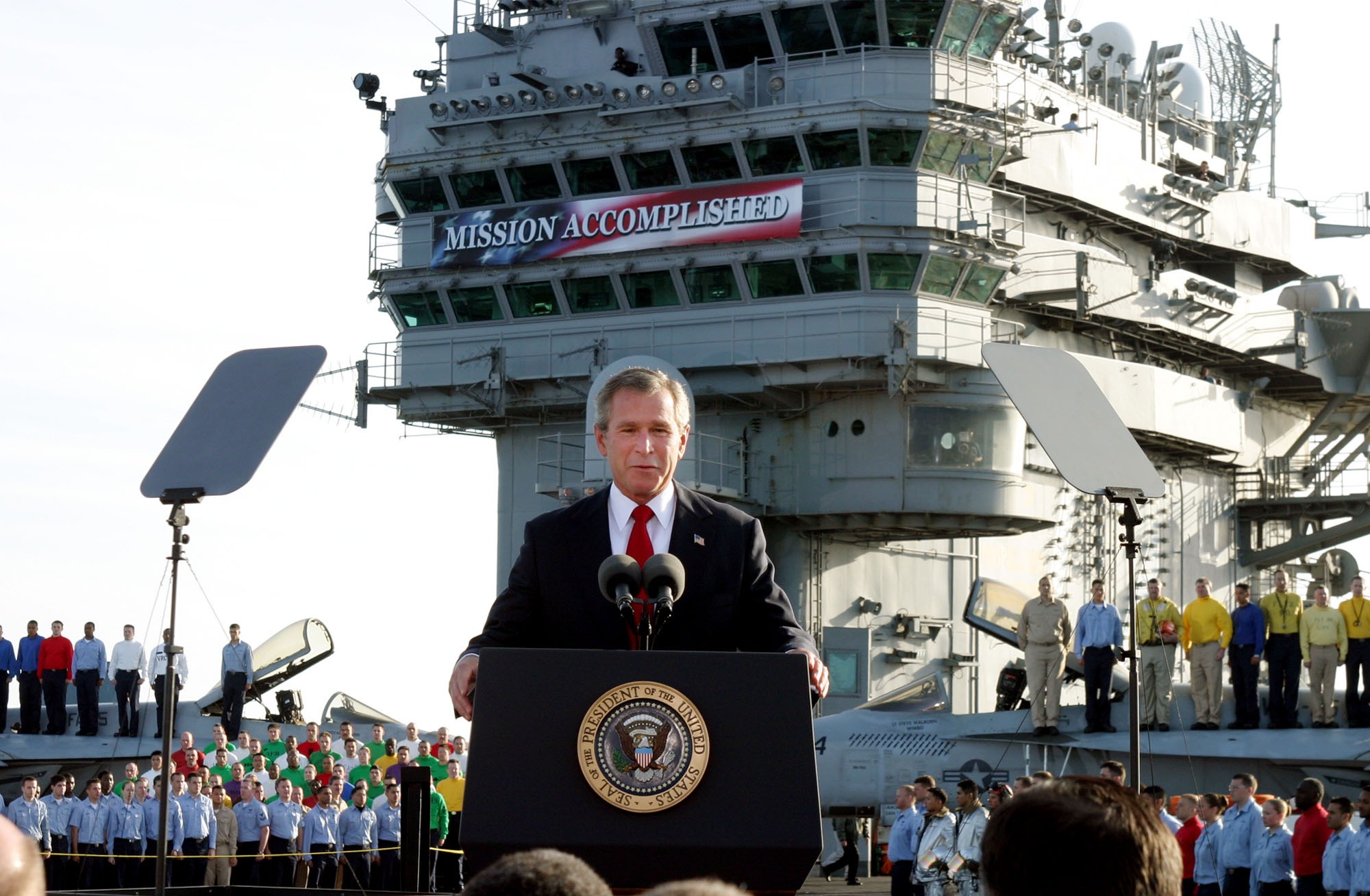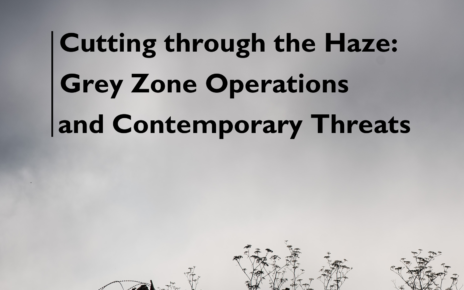A few months ago, the Canadian Government announced that Canada would withdraw from two of NATO’s surveillance programs, the Airborne Warning and Control System (AWACS) and the Alliance Ground Surveillance (AGS), as the Harper administration continued its goal of trimming down government spending. This decision was rather controversial, especially since withdrawal from the program would mean a loss of lucrative contractual opportunities for Canada’s aerospace industry. Moreover, due to fact that Canada has enjoyed a long history of partnering with NATO for the development of aerospace technology, critics and commentators alike were baffled by the decision, suggesting that the Conservative government might try to shift Canada’s strategic priorities. Before we get to that point, it is important to understand the long-developed reciprocal relationship between Canada’s aerospace industry and NATO’s needs for aerospace technology.
[captionpix align=”right” theme=”elegant” width=”300″ imgsrc=”http://www.rmc.ca/aca/me-gm/images/rmc-and-snowbirds_001_001.jpg” captiontext=””]
For many years Canada has played a significant role in promoting NATO’s mission of peace and security among its member states. In spite of not being considered as a major military power, Canada’s contribution to NATO is evident, particularly in the field of aerospace military technology and its developments/applications. Indeed, a lot of the very well known and world-renowned Canadian military companies (or contractors) such as the staples like Bombardier and CAE of Quebec, Magellan Aerospace Corporation of Ontario, young companies like Discovery Air of NWT and Viking Air of B.C are all aerospace-based (or have designated a department specially for aerospace) companies. Moreover, due to Canada’s already mature aerospace sector, some of world’s top and biggest aerospace military contractors like Lockheed Martin, L-3 Communications, Thales, Pratt & Whitney and The Boeing Company also chose to have subsidiary branches set up in Canada. Together, those companies contribute to make Canadian aerospace industry a recognizable global brand, known for its “quality, value, performance and reliability.”
AeroCanada and NATO
With the backing of such advanced aerospace industry, Canada has a long history of supporting NATO in this regard. Although Canada initiated the development of its aerospace industry well before the inauguration of the North Atlantic Treaty in 1949, the creation of NATO certainly helped Canadian aerospace sector flourish. Among many contributions Canada has made to NATO, providing solid air training to the member states’ military pilots is definitely the one that stands out.
Canada was well-positioned in this, as during the Second World War, the British Empire chose Canada as the designated venue for the British Commonwealth Air Training Program. By the end of the war, not only had Canada successfully trained over 130,000 pilots from the Commonwealth nations, the program also helped laying out the solid foundation for Canada’s aerospace industry.
As NATO came into existence after the war, hundreds and thousands of Canadians and internationals came to Canada to learn the military flying skill under the NATO Air Training Plan. The development of the Canadian aerospace industry went hand in hand with the training program contributing to a notion that Canadian arms industry has the “tendency” towards developing “military aerospace” or electronic products.
Today, despite the fact that the Cold War has ended and several other NATO nations have developed similar training programs of their own, NATO’s air training program in Canada is still up and running. It is operated under the name of NATO Flying Training in Canada (NFTC) and is run jointly by the Royal Canadian Air Force and Bombardier Aerospace in Moose Jaw, Saskatchewan and Cold Lake, Alberta. NFTC is perhaps the biggest training program in NATO, if not the world, that combines the strengths of both public and private sectors. Because of this distinctive feature, the program can proudly claim that it is capable of “providing the most capable fighter pilot at the lowest total cost.” The standard and quality of the program is also high, providing the would-be pilot students from Canada and all around the world with many phases of rigorous (18-20 months in total) training. In terms of result, NFTC is an “unquestioned success “in providing high-quality, standardized pilots to Canadian Forces and NATO’s member states. At the same time, it is not a commercial success for Bombardier and the level of competition in the field of air training is getting fierce.
[captionpix align=”left” theme=”elegant” width=”300″ imgsrc=”http://www.ctvnews.ca/polopoly_fs/1.1058976!/httpImage/image.jpeg_gen/derivatives/landscape_620/image.jpeg” captiontext=”NATO’s air training program in Canada is still up and running”]
The other great Canadian contribution to the NATO is, ironically, AWACS, the very program that Canada has withdrawn from. According to the Globe and Mail, Canada has contributed around $161 million between 1992 and 2010 to the AWACS program, leading an extensive campaign to transform the program to become “a modern-day airborne (command) force equipped and ready to provide command and control to the NATO commanders of the 21st century.” An upgraded AWACS played a crucial role in NATO’s military intervention in Libya and is continuously used by NATO forces in Afghanistan. As mentioned earlier, NATO’s needs for new aerospace technology has a reciprocal relationship with Canada’s aerospace industry and AWACS is no exception. It is reported that Canada received close to $180 million from 1992 and 2010 through military contracts; the benefit is apparent.
So, what was the government thinking?
With a strong aerospace industry, a long history of partnership and an apparent, mutual benefit from working with NATO, it is very difficult to comprehend why the Canadian government decided to pull Canada out of AWACS and future involvement of developing AGS. At the same time, as Bombardier keeps on losing money running the program, NFTC might also be in danger of downgrading as the Department of National Defense is expected to cut as much as $2.5 billion out of its annual budget by 2014. Judging from the government’s claims that withdrawal from NATO’s program actually paves the road for Canada to develop it’s own drones and that the still proposed F-35 plan would keep aerospace industry busy, it is very tempting to guess that Harper administration is trying to drastically shift Canada’s security priorities. Will Canada redefine its role in NATO for the upcoming years? This is perhaps the question that we will have to wait to find out.




